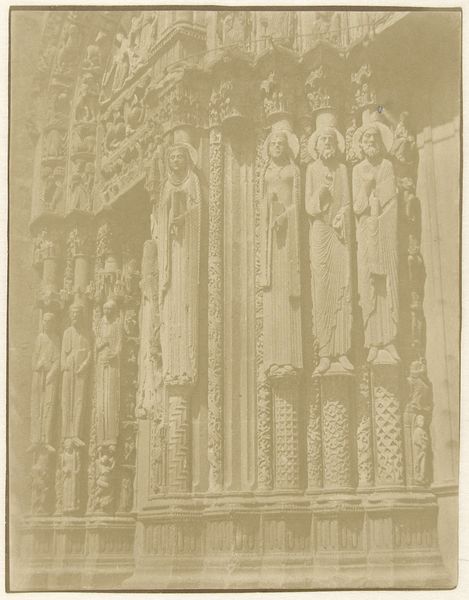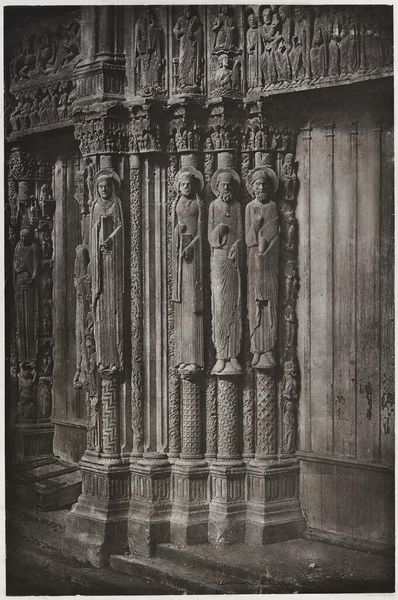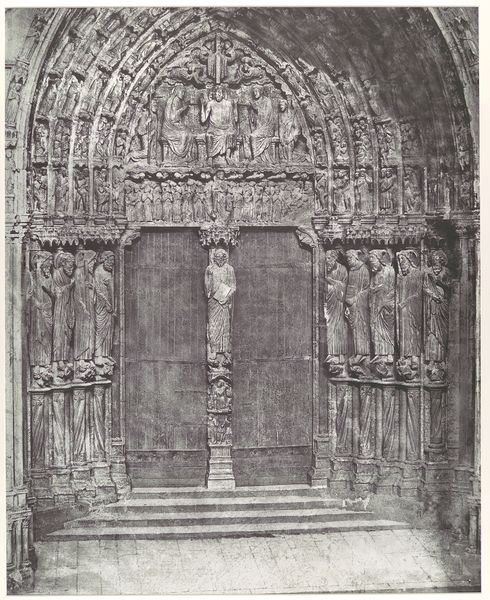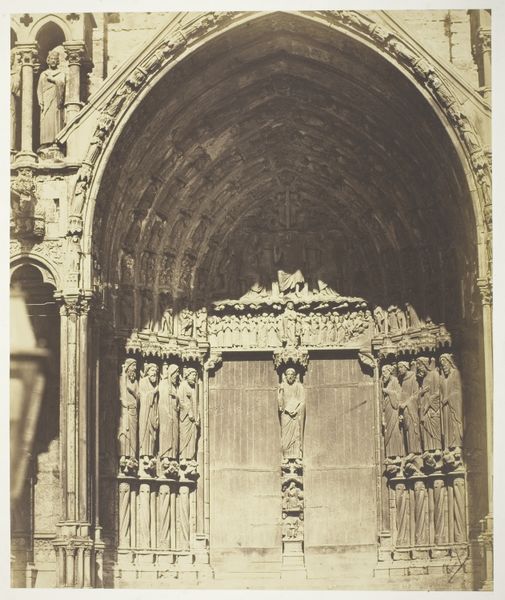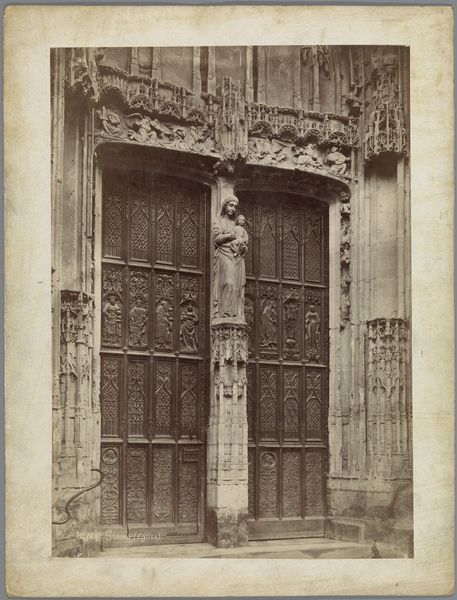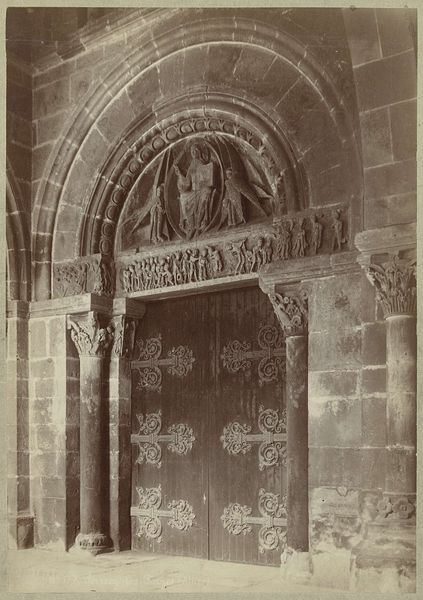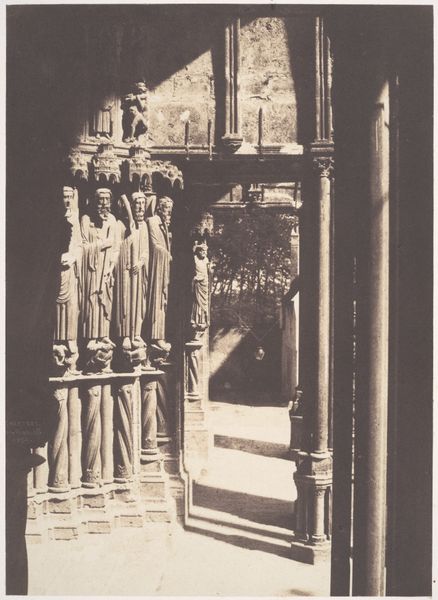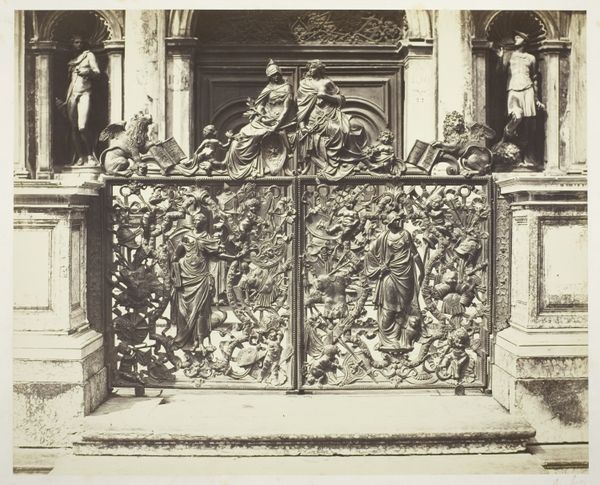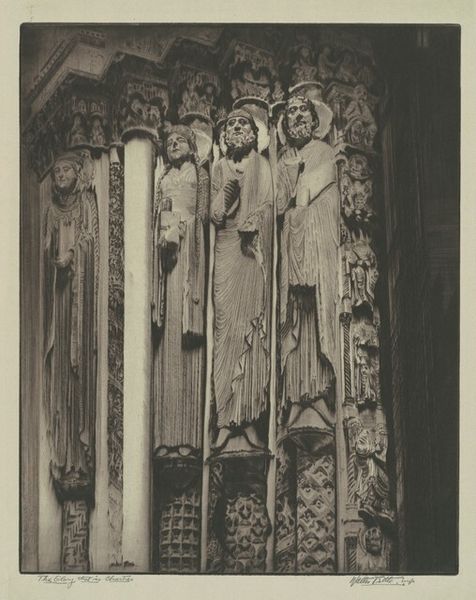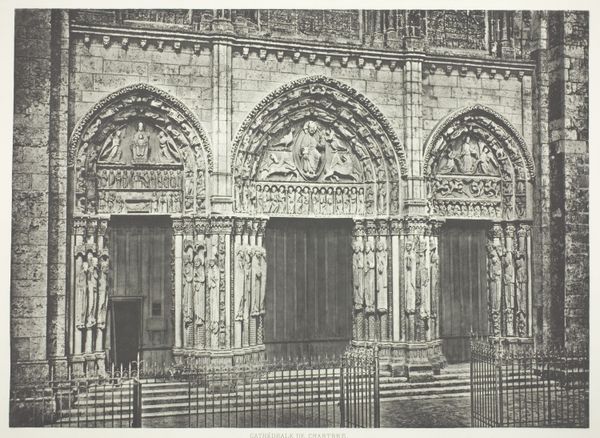
photography, sculpture, gelatin-silver-print
#
portrait
#
medieval
#
photography
#
romanesque
#
geometric
#
sculpture
#
gelatin-silver-print
#
19th century
#
history-painting
Dimensions: height 161 mm, width 113 mm
Copyright: Rijks Museum: Open Domain
Curator: Here we have Charles Nègre’s 1854 gelatin-silver print, "Relief on the Portal of Chartres Cathedral," part of the Rijksmuseum collection. It captures, in incredible detail, the medieval stonework surrounding one of the cathedral’s entrances. Editor: The photograph is striking—the way the light plays across the carved figures and the intricate patterns is compelling. The monumental scale is also so clear even in this monochromatic image. Curator: Nègre was very interested in using photography to document architecture. In his era, large buildings held significant cultural meaning, with architectural preservation gaining popularity as photography rose in prominence. His work serves as a kind of archive, a way of cataloging history and artistic achievement in this particular moment. Editor: I notice the strong verticals created by the columns and figures which is then counterbalanced by the horizontal steps. The symmetry is formal and somewhat imposing. Also interesting, is that Nègre seems less concerned with atmospheric effects, focusing instead on capturing every textural detail in sharp resolution. Curator: He aimed to offer a realistic representation and the clarity gives an incredible sense of immediacy even over so many years. One could argue this represents both an impulse toward historical record, but also the rising social status of photography as art. The photograph became both historical document and art object in and of itself. Editor: Yes, a duality, but also the sharp focus on the geometric patterns, which almost become abstracted through repetition, also emphasizes Nègre's visual exploration of form as being as valid a concern as architectural preservation. The play of light and shadow emphasizes and enhances these formal elements, which is why it resonates so well with me. Curator: Perhaps it’s a demonstration of how the objective impulse to document history can inadvertently generate a striking work of art, influencing later artists in how to perceive their environment, and architecture specifically, in ways unseen before. Editor: Certainly. The power of his framing encourages viewers to discover rhythm, patterns and shape. These visual dialogues make the architectural subject an aesthetic object that invites exploration and consideration, long after the social purpose it fulfilled has gone.
Comments
No comments
Be the first to comment and join the conversation on the ultimate creative platform.
